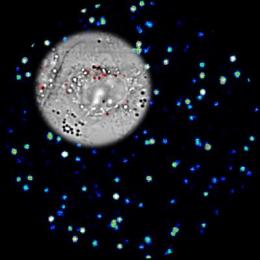Ultrasensitive imaging method uses gold-silver ‘nanocages’
April 14, 2010
A new experimental ultrasensitive imaging technique developed by Purdue University scientists that uses a pulsed laser and tiny metallic “nanocages” might enable both the early detection and treatment of cancer and other diseases.
The new imaging approach uses a phenomenon called “three-photon luminescence,” which provides higher contrast and brighter images than conventional fluorescence imaging methods.
Normally, three-photon luminescence is too dim to be used for imaging. However, the presence of gold and silver nanoparticles enhances the brightness, overcoming this obstacle.
The ultrafast laser also is thought to possibly play a role by causing “third harmonic generation,” which increases the brightness.

